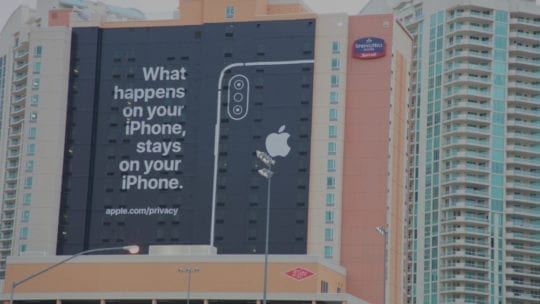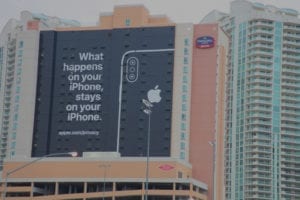
With CES, formerly the Consumer Electronics Show, closing its doors later today in Las Vegas, communicators will travel home with ideas of how tech will change their tactics, strategies and business objectives. Here are a few examples of what they learned from CES 2019.
Invasion of Artificial Intelligence
Products that leveraged some form of AI were ubiquitous at the country’s largest trade event. One of the most repeated phrases from analysts at CES was, “We better get used to [AI].”
A big shift this year concerned the way AI devices and computers acquire knowledge. The automation of processes and business will give rise to concerns, as AI gets smarter, writing complete sentences, analyzing and organizing databases. Some argue communicators could be automated out of a job.

In the near-team, communicators increasingly will see AI-powered improvements in mobile and desktop devices that use voice-based interfaces (“Hey, Alexa, set a calendar reminder”), to upgraded video technology (“Google, what am I seeing right now?”), to facial-recognition solutions, arriving soon in vehicles and eventually controlling the roads.
The first PR agency that fully integrates an AI-machine learning bot that can analyze quantum amounts of consumer data will be a game changer. We can only guess at the implications for billing of having an AI device do work for brands as opposed to a human.
Investment in Peer-to-Peer Technology
Smart wearable devices, such as smart watches, and soon to include smart mirrors, smart in-home FaceTime technology, and smart toilets, will see an annual average growth rate of 14 percent for units sold over the next five years, according to CES statistics. The potential for communicators to craft messages for such devices seems limitless.
Many of us wear smart watches to push important news, tweets, and schedules to the forefront of our attention. Soon communications teams at CES and other events will equip themselves with earpiece radios and tablets, replacing group text message chat. Micro-communication from one end of a booth or exhibit hall, or macro-communication, from Los Angeles to New York, will need to be instantaneous. This is so because a sizable percentage of CES attendees has, writes, or contributes to a form of online media.
Investing in communication and creating as much human connection as possible will be key to successful event management. This should be a growing trend as workplaces deploy video and imaging technologies that connect teams across mass distances. The rise in human connection through communication and video also will be key for brands interacting with consumers.
5G’s emergence, which spurred a marketing controversy at CES, presumably will enable the increased use of video.
It also will power AR and VR. These technologies should help marketers create highly personalized experiences for consumers. A goal will be to bring fans closer to brands and brand venues despite geographical distances.
Owned and Independent Media
Communicators come to CES to learn about and test cultural transformations for the New Year. We continue to return to the Las Vegas desert because communicators need to become the early adopters of innovative technology. Unfortunately, we’re already behind.
On the upside, this year will see more brands, organizations and their communicators adopt current visual communications trends, such as YouTube channels, Instagram TV podcasts, and brand journalism.

Yet the world’s online market is changing rapidly. There are advancements in cutting-edge visual graphics, instant mobile and online advertising, and large budgets for brand-influencer relationships. Speaking of influencers, this year brands will invest heavily to create customized influencer content. This will be a hedge against consumers shying away from brand-sponsored content owing to the data breaches and privacy issues of 2018. Incidentally, without an official presence at CES, Apple grabbed lots of attention with its huge, privacy related sign (see photo).
Many companies used brand journalism for daily CES recaps and communicating messages to new and existing audiences. I look forward to the day when CES exhibitors host world-known podcasters or YouTube sensations for in-booth storytelling segments.
David Wolpert is a director at LDWW Follow him at: @dfwolpert
